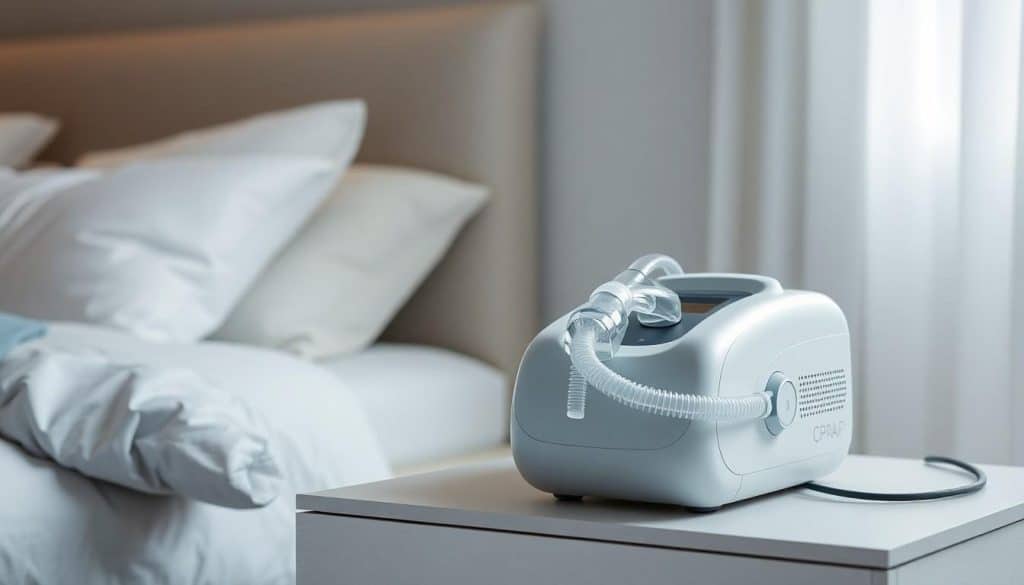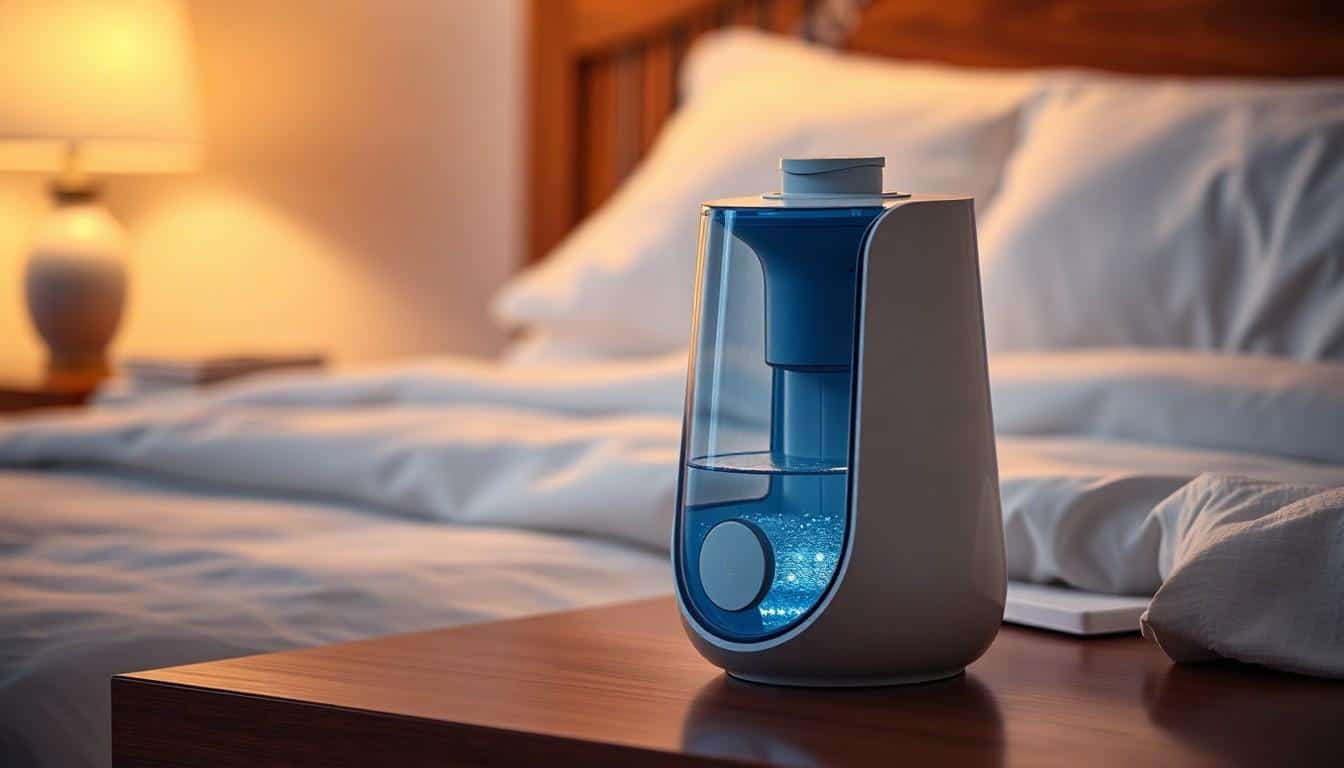A peaceful night’s sleep shouldn’t be disrupted by the sound of your CPAP machine. While these devices are essential for managing sleep apnea, the noise they generate can affect both your sleep quality and your partner’s rest. Understanding CPAP noise levels and finding ways to minimize them can make a significant difference in your therapeutic experience.
Many CPAP users don’t realize that modern machines typically operate between 25-30 decibels – about as quiet as a whisper. If you’re experiencing louder noise levels, it might indicate that your machine needs attention or that you’re using it incorrectly. With proper maintenance and the right techniques, you’ll discover that using a CPAP machine doesn’t mean sacrificing a quiet bedroom environment.
Key Takeaways
- Modern CPAP machines typically operate at 25-30 decibels, comparable to a whisper, making them suitable for most bedroom environments
- Proper placement and maintenance significantly impact noise levels – regular cleaning, filter changes, and positioning at least 6 inches from walls can reduce sound output
- Key factors affecting CPAP noise include mask fit, tubing configuration, machine placement, and pressure settings
- Sound-dampening solutions like rubber mats, foam pads, and strategic positioning can effectively minimize operational noise
- Regular maintenance schedule (monthly filter cleaning, quarterly mask cushion replacement) helps maintain optimal noise levels and machine performance
Understanding CPAP Machine Noise Measurement
CPAP machine noise levels are measured in decibels (dB), with modern devices engineered to operate at minimal sound levels for optimal sleep comfort. The measurement process focuses on both the machine’s operational sounds and any additional noise from air delivery.
Common Noise Level Standards
Most current CPAP machines operate between 25-30 decibels, creating a gentle ambient sound environment. Here’s how CPAP noise levels compare to everyday sounds:
| Sound Source | Decibel Level (dB) |
|---|---|
| Whisper | 25 dB |
| CPAP Machine | 25-30 dB |
| Library | 40 dB |
| Rainfall | 50 dB |
The noise output increases proportionally with higher pressure settings, though modern machines maintain relatively quiet operation even at elevated pressures.
What Makes a CPAP Machine Quiet
Several key factors contribute to a CPAP machine’s noise level:
- Insulated Housing: High-quality machines use sound-dampening materials in their construction
- Motor Design: Advanced brushless motors produce minimal operational noise
- Air Pathway: Streamlined air channels reduce turbulence-related sounds
- Pressure Control: Smart pressure adjustment systems minimize sudden noise spikes
- Mask Fit: A properly sealed mask prevents air leaks that create whistling sounds
The acoustic performance depends on the machine’s:
- Operating pressure settings
- Regular maintenance schedule
- Component quality
- Environmental placement
- Air filter condition
These technical specifications create measurable differences in sound output across different CPAP models and manufacturers.
Typical Noise Levels of Popular CPAP Machines
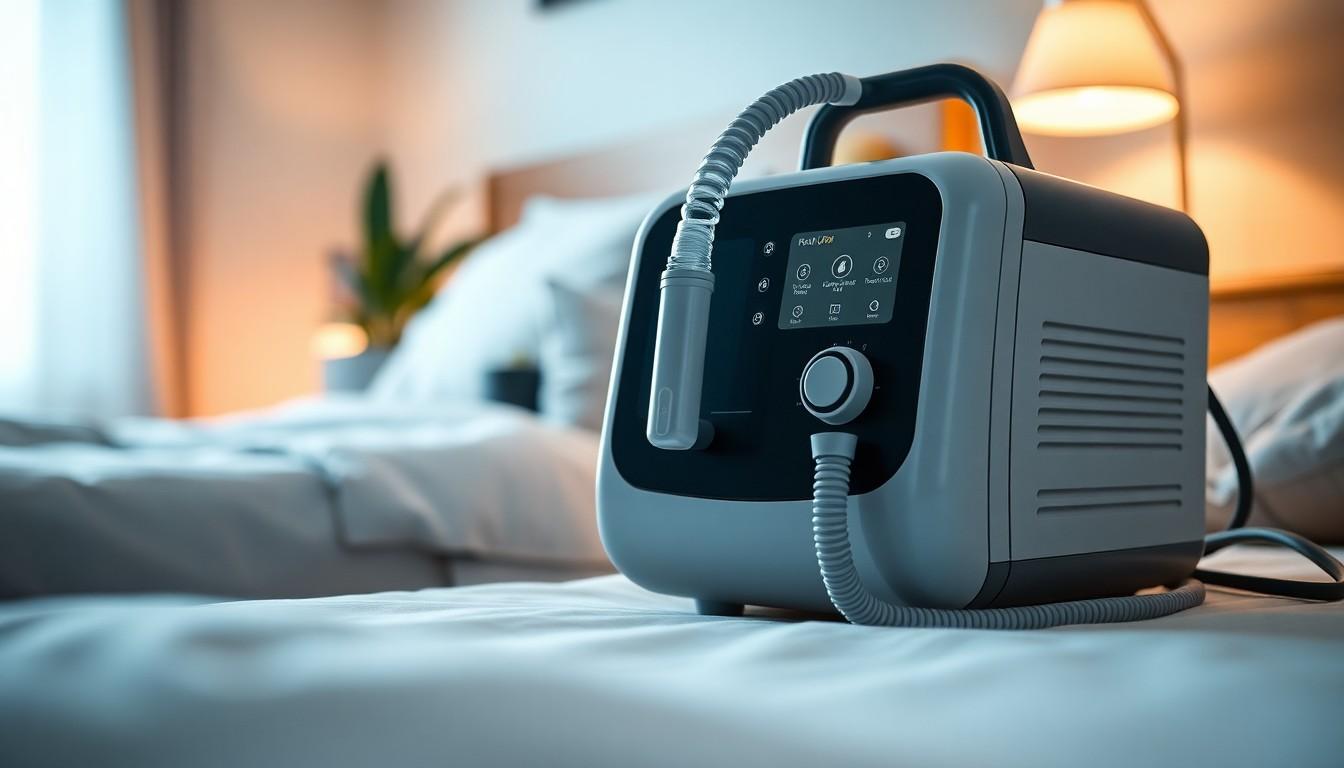
Leading CPAP manufacturers prioritize noise reduction in their machine designs, with most modern models operating between 25-30 decibels (dB). Here’s a detailed breakdown of noise levels from major CPAP manufacturers.
ResMed Models Noise Comparison
ResMed’s advanced technology produces exceptionally quiet CPAP machines. The AirSense 10 AutoSet features:
- Easy-Breathe motor design for minimal operational noise
- Noise-isolating materials in machine housing
- Performance at whisper-quiet levels (25-30 dB)
- Increased sound levels of 35-45 dB at higher pressures (10-20 cmH2O)
| ResMed Model | Noise Level (dB) | Pressure Setting (cmH2O) |
|---|---|---|
| AirSense 10 | 25-30 | Standard (4-10) |
| AirSense 10 | 35-45 | High (10-20) |
Philips Respironics Noise Ratings
Philips Respironics machines incorporate WhisperSmart technology for quiet operation:
- Advanced sound dampening materials
- Streamlined air channels for reduced turbulence
- Average noise output comparable to ResMed (25-30 dB)
- Extra noise reduction features in premium models
| Machine Type | Operating Range (dB) |
|---|---|
| Standard Use | 25-30 |
| High Pressure | 35-45 |
Note: All measurements represent manufacturer specifications under controlled conditions. Actual noise levels vary based on pressure settings, maintenance status, environmental factors.
Factors That Affect CPAP Noise Output

CPAP machine noise levels fluctuate based on several environmental and operational factors. Understanding these elements helps optimize the acoustic performance of your CPAP device.
Machine Placement and Surface Types
The location and surface where you place your CPAP machine directly impacts its noise output. Hard surfaces reflect sound waves, creating more noticeable noise, while soft surfaces absorb vibrations. Place your CPAP machine on:
- Foam padding or rubber mats to reduce vibration transfer
- Nightstands with fabric covers or cushioned surfaces
- Stable platforms at least 6 inches from walls or corners
- Level surfaces to prevent additional motor strain
Mask and Tubing Considerations
Mask fit and tubing configuration contribute significantly to CPAP noise levels. Proper mask and tubing management reduces unwanted sounds through:
- Secure mask seals to eliminate whistling from air leaks
- Suspended tubing systems to prevent dragging or rustling
- Anti-kink tubing designs to maintain smooth airflow
- Heated hose options that reduce condensation noise
- Mask cushions aligned correctly with facial contours
| Component | Optimal Range | Impact on Noise |
|---|---|---|
| Mask Seal | <2L/min leak | -5 to -10 dB |
| Tubing Length | 6-8 feet | -2 to -4 dB |
| Distance from Wall | >6 inches | -3 to -5 dB |
Tips to Reduce CPAP Machine Noise
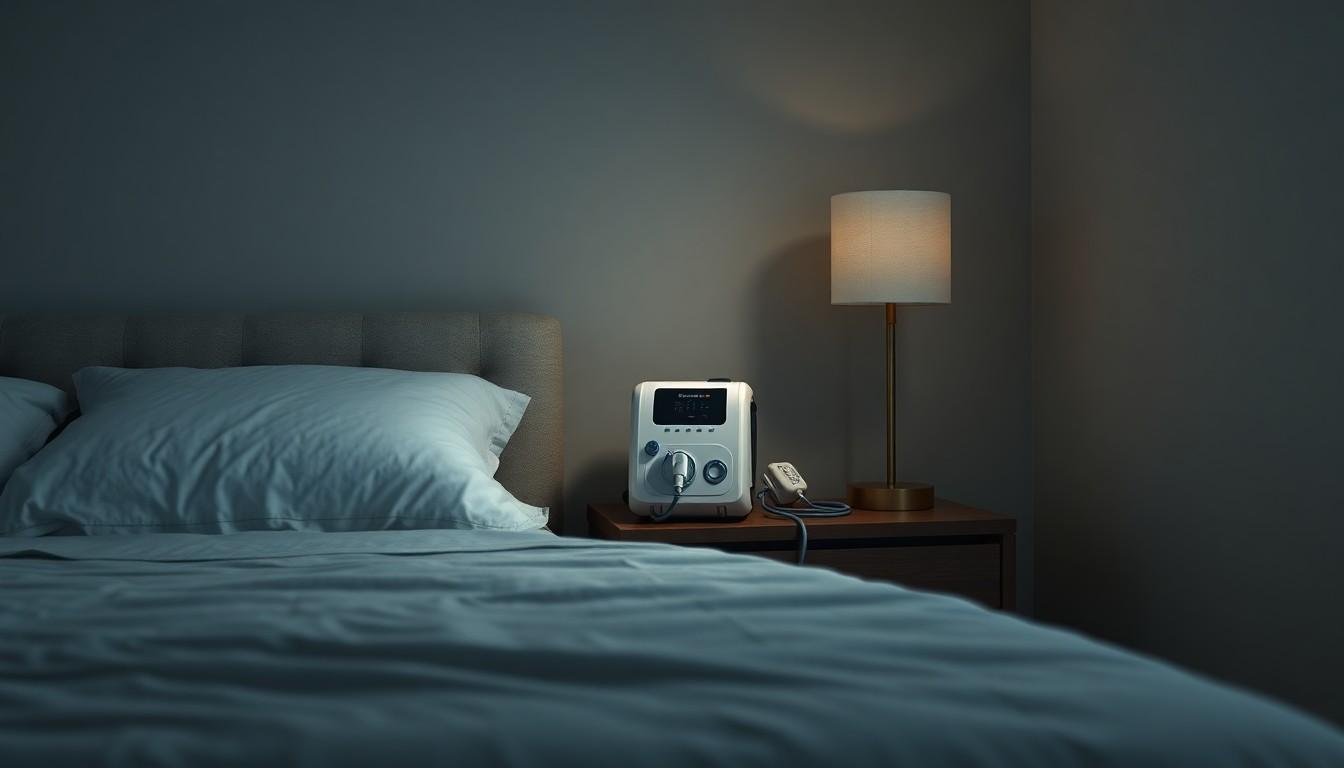
Modern CPAP machines produce minimal noise during operation when properly maintained and positioned. These practical solutions help create an optimal sleep environment while ensuring effective therapy.
Proper Maintenance and Cleaning
Regular maintenance reduces operational noise in CPAP machines:
- Clean filters monthly to prevent debris buildup that strains the motor
- Replace mask cushions every 3 months to maintain proper seals
- Inspect tubing quarterly for cracks or leaks that create whistling sounds
- Check connections weekly to ensure tight seals at mask-tube junctions
- Remove water from CPAP humidifier chambers daily to prevent gurgling noises
Using Sound Dampening Solutions
Sound dampening materials and strategic placement minimize CPAP noise:
- Place machines on rubber mats or foam pads to absorb vibrations
- Position devices 6+ inches from walls to prevent sound reflection
- Use suspended tubing systems to reduce movement noise
- Install sound-absorbing panels behind machines when near walls
- Select stable surfaces like nightstands or dedicated CPAP tables
| Component | Recommended Distance/Timing | Noise Impact (dB) |
|---|---|---|
| Wall Distance | 6+ inches | -3 to -5 dB |
| Filter Changes | Monthly | -2 to -4 dB |
| Mask Seal | Check Weekly | -4 to -6 dB |
| Surface Padding | 0.5-inch thickness | -2 to -3 dB |
Impact of Noise on Sleep Quality and Partners
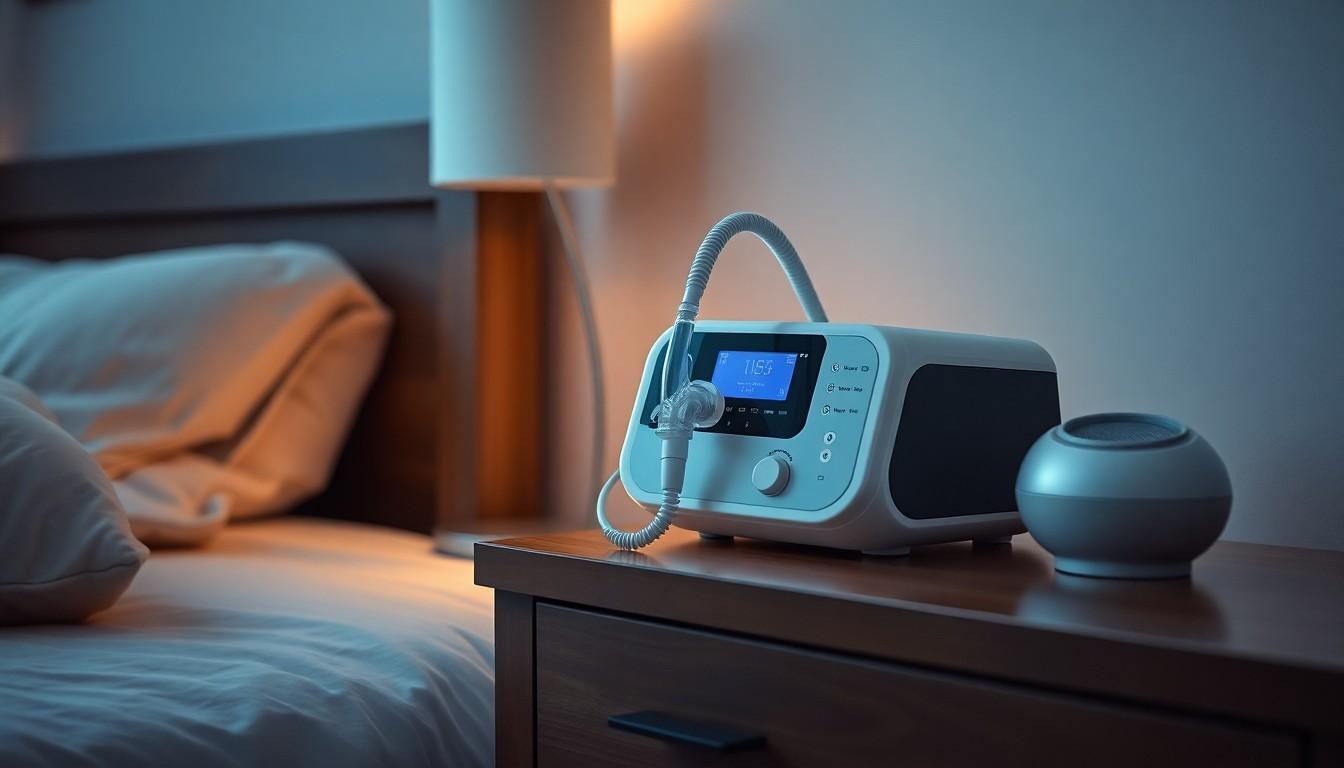
CPAP machine noise affects both users and their sleeping partners, with sound levels playing a crucial role in sleep quality. Modern CPAP machines operating at 25-30 decibels create minimal disruption in typical bedroom environments.
Managing Partner Disturbance
CPAP machine sounds impact sleeping partners differently than users due to their position in relation to the device. Here are effective strategies for minimizing partner disturbance:
- Position the machine on the user’s side of the bed, creating distance between the device and partner
- Place a white noise machine between the CPAP device and partner’s sleeping area
- Use sound-dampening materials like rubber mats under the machine
- Arrange furniture to create natural sound barriers
| Distance from CPAP | Typical Sound Level |
|---|---|
| At source | 27-30 dB |
| 3 feet away | 20-25 dB |
| 6 feet away | 15-20 dB |
Sleep Quality Considerations
The consistent white noise from CPAP machines often enhances sleep quality through:
- Creating a steady background sound that masks sudden environmental noises
- Establishing a consistent sleep environment
- Providing rhythmic airflow that promotes relaxation
For optimal sleep quality:
- Set the CPAP machine at least 6 inches from walls or surfaces
- Maintain pressure settings within prescribed ranges
- Keep all components clean and properly connected
- Replace worn parts according to manufacturer schedules
These measures ensure the machine operates at its quietest level while delivering effective therapy.
Conclusion
Modern CPAP machines offer remarkably quiet operation that won’t disrupt your sleep or your partner’s rest. By implementing proper maintenance routines and following sound-reduction strategies you’ll create an optimal sleep environment while getting the most from your therapy.
Remember that a well-maintained CPAP machine operating at 25-30 decibels is no louder than a soft whisper. Through smart placement careful upkeep and attention to components like masks and tubing you can enjoy peaceful nights while effectively managing your sleep apnea.
Your journey to better sleep doesn’t have to be a noisy one. With today’s advanced CPAP technology and the right care practices you’ll breathe easier knowing you’re getting quality rest without sound-related disruptions.
Frequently Asked Questions
What is the typical noise level of modern CPAP machines?
Modern CPAP machines typically operate between 25-30 decibels, which is comparable to a whisper. This noise level is considered very quiet and shouldn’t disturb most users or their sleep partners during normal operation.
How can I reduce the noise from my CPAP machine?
You can reduce CPAP noise by placing the machine on a rubber mat, positioning it at least 6 inches from walls, ensuring proper mask fit, regularly cleaning filters, and maintaining all components. Using sound-dampening materials and keeping the machine on a stable surface also helps minimize noise.
Does CPAP machine noise affect sleep quality?
While CPAP machines produce minimal noise, their consistent white noise can actually enhance sleep quality by masking sudden environmental sounds. Most users and their partners adapt to the gentle humming within a few nights of use.
How often should I maintain my CPAP machine to keep it quiet?
Regular maintenance includes cleaning filters weekly, replacing mask cushions monthly, inspecting tubing quarterly, and checking all connections during each use. Following these maintenance schedules helps maintain optimal noise levels and machine performance.
Why is my CPAP machine louder than usual?
Increased noise usually indicates maintenance issues, improper mask fit, blocked filters, or damaged components. Higher pressure settings can also increase noise levels. If your machine suddenly becomes louder, check these factors or consult your healthcare provider.
What’s the best placement for a CPAP machine to minimize noise?
Place the CPAP machine on a stable, level surface at least 6 inches from walls or corners. Using foam padding or rubber mats under the machine helps reduce vibration transfer. Avoid placing it directly on nightstands that can amplify sound.
How do different CPAP machines compare in terms of noise levels?
Leading manufacturers like ResMed and Philips Respironics produce machines operating at 25-30 dB under standard settings. Noise levels may increase to 35-45 dB at higher pressures, but most modern machines prioritize quiet operation through advanced sound-dampening technology.
Can CPAP noise disturb my sleep partner?
While modern CPAP machines are relatively quiet, some partners may be sensitive to the sound. Using white noise machines, positioning the CPAP on the user’s side, and employing sound-dampening materials can help minimize any disturbance to sleep partners.

